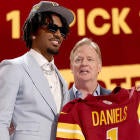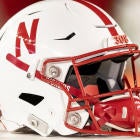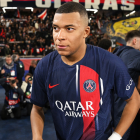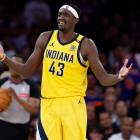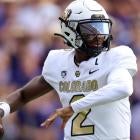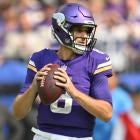Another Sunday, another game in which the Browns hung around with a superior opponent before having their flaws exposed en route to another loss.
It was the first defeat for Cleveland's new general manager John Dorsey. But of course no one's blaming him for the team moving to 0-14 after his first week on the job.
Last Thursday, Dorsey blasted his predecessor Sashi Brown and the players he acquired during his two-offseason stint as GM of the Browns. This, from Will Brinson's article on Dorsey's comments:
"You know what? You've got to get a guy like [Hue Jackson] players," Dorsey said, via Mary Kay Cabot of the Cleveland Plain-Dealer. "And you know what? I'll come straight out with it. The guys who were here before, that system, they didn't get real players."
Whoa. "Didn't get any real players." Harsh.
Is Dorsey right though? Did Sashi Brown fail in his acquisition of players, especially in the draft?
Looking back on Brown's two draft classes -- in 2016 and '17 -- remarkably, two clear-cut themes emerge. Let's examine to come to a conclusion of whether or not Dorsey's pointed words were spot on or undeservedly critical.
Browns' 2016 Draft Class
Name | Round | Overall Pick | Position |
1 | 15 | WR | |
2 | 32 | DE | |
3 | 65 | DE | |
3 | 76 | OT | |
3 | 93 | QB | |
4 | 99 | OLB | |
4 | 114 | WR | |
4 | 129 | S | |
4 | 138 | TE | |
5 | 154 | WR | |
5 | 168 | OG | |
5 | 172 | WR | |
5 | 173 | DB | |
7 | 250 | ILB |
Theme: Elite Collegiate Production
Corey Coleman: In his final two collegiate seasons -- 2014 and 2015 -- Coleman had the fifth-most receiving yards (2,482) and the most receiving touchdowns (31) in the country. In his final season at Baylor, he finished with a whopping 36.2 market share of the team's receiving yards -- anything above 30 percent is good -- and 45.4 percent of the market share for receiving touchdowns, an even more astounding number.
Emmanuel Ogbah: In 2014 and '15 combined, he finished second in the country (behind only ... Myles Garrett) in sacks (21.5) and 12th in tackles for loss (31.0).
Carl Nassib: Your college football (FBS) sack leader in 2015 was -- you guessed it -- Nassib, the Browns' first of a trio of third-round picks in the 2016 draft. The Penn State star had -- depending where you look -- either 15.5 or 16 sacks in his last year with the Nittany Lions. Either figure won him the sack title.
Cody Kessler: From 2014 to 2015, Kessler finished second only to Western Kentucky's Brandon Doughty in completion percentage (68.3 to 69.9) among quarterback's who started both those seasons. The USC star's 68 touchdowns over that two-season stretch was third to Doughty and ... Jared Goff.
Joe Schobert: Finished sixth in tackles for loss in 2015 with 20 (tied with Nassib). And in his final two years at Wisconsin, his 31 tackles for loss ranked 13th in the country.
Derrick Kindred: Combining his 2014 and 2015 seasons at TCU, the safety had 161 tackles, eight tackles for loss, and six interceptions. Only five other players in the country hit all three of those benchmarks during that time.
Jordan Payton: His 145 catches placed him 12th and his 2,059 yards placed him 19th in receiving yards in the country when combining the 2014 and 2015 seasons.
Rashard Higgins: In 2014, he led the country in receiving yards (1,750) and receiving touchdowns (17). Higgins finished with the second-most receiving yards (2,811), third-most receiving touchdowns (25), and fifth-most receptions (170) in 2014 and 2015 combined.
Trey Caldwell: One of five players in the country in 2015 with at least 50 tackles, five tackles for loss and 10 pass breakups.
Scooby Wright: In 2014, he led the nation in tackles (164) and tackles for loss (31).
The term "box-score scouting" has a deep, negative connotation in the scouting community, as it insinuates film wasn't watched before forming an opinion on a prospect.
However, "box-score scouting" does have a place in prospect evaluation. It's part of the full equation. Most quality NFL players were productive in college. The "low-production, high-potential" prospects typically have steep learning curves at the pro level and more often than not fall short of perceived expectations.
The above rundown could easily suggest the Browns simply glanced at box scores to determine their selections. But, of course, it's a near certainty Cleveland's Sashi Brown-run front office watched plenty of film during the draft process.
Determining which stat lines will translate to the NFL level is the difficulty of factoring in the box-score aspect of a prospect evaluation. In the end, not all 16-sack seasons are created equal nor do they indicate the same level of NFL success for every defensive end.
Therefore, on the surface, prioritizing collegiate production -- which is seemingly what the Browns did -- is logical but, just like film, can't be the driving force behind a draft-day decision.
Browns' 2017 Draft Class
Name | Round | Overall Pick | Position |
Myles Garrett | 1 | 1 | DE |
1 | 25 | S | |
1 | 29 | TE | |
2 | 52 | QB | |
3 | 65 | DT | |
4 | 126 | DB | |
5 | 160 | OT | |
6 | 185 | DT | |
7 | 224 | K | |
Matthew Dayes | 7 | 252 | RB |
Theme: Explosive Athleticism
Myles Garrett: Among defensive ends at the combine starting in 1999, Garrett finished in the 88th percentile in the 40-yard dash, 94th percentile in the bench press, 96th percentile in the broad jump, and the 98th percentile in the vertical jump. He has a good argument for the most impressive combine performance ever.
Jabrill Peppers: Among safeties, his broad jump placed him in the 93rd percentile. His 40-yard dash was in the 90th percentile.
David Njoku: The University of Miami tight end placed in the 75th percentile or higher in the following combine events: Three-cone drill (80th), broad jump (98th), vertical jump (90th), 40-yard dash (79th).
Larry Ogunjobi: The UNC-Charlotte product placed in the 65th percentile or higher in the three-cone drill (67th), broad jump (96th), vertical jump (80th), 40-yard dash (78th).
Howard Wilson: Despite a 4.57 in the 40 that ranked in the 24th percentile among cornerbacks, Wilson posted a three-cone in the 90th percentile and a 20-yard shuttle in the 92nd percentile.
*all percentiles are among players at the same position at the combine starting in 1999.
It's not as if the Browns completely abandoned their emphasis on collegiate production, but it certainly didn't play nearly as big of a role in Cleveland's draft class of 2017 as it did in 2016.
Picking Peppers in Round 1 to play safety after just one interception in three seasons at Michigan is the clearest sign of that.
Ogunjobi amassed 29 tackles for loss in two years at UNC-Chartlotte but had just 5.5 sacks from his interior defensive line spot.
Njoku averaged a hefty 16.6 yards per reception in two years with the Hurricanes, yet his combine performance stood out slightly more than his production with Miami.
In an ideal world, a team would pick players who displayed elite production and explosive, twitchy athleticism at the collegiate level. Garrett is a prime example of that. His athleticism is otherworldly plus he had 47 tackles for loss and 31 sacks in three seasons at Texas A&M. Ridiculous. Njoku did have 43 receptions for 698 yards with eight scores in his final season at Miami, so he would be labeled as another prospect who checked both the production and athleticism boxes.
Unsurprisingly, Garrett has been outstanding when he has been healthy as a rookie, leading the team with five sacks. Njoku, as a 21 year old, is third on the Browns in all major receiving categories.
On the other hand, Peppers is currently Pro Football Focus' fourth-lowest graded safety out of 86 qualifiers at the position.
Of Cleveland's 2016 draft class, Nassib (4.5 sacks on 1,109 career snaps), Schobert (flipped to inside linebacker), and Higgins (28 receptions, 301 yards and no TDs on 755 career snaps) tested relatively poorly at the combine and have struggled in the NFL. The same goes for Payton and Wright, both of whom have already been released by the Browns.
Ogbah, Coleman and Kindred, who checked the production and athleticism boxes, have been bright spots for Cleveland, although Ogbah is currently sidelined with injury.
I would be remiss if I didn't mention the quarterbacks drafted during the short-lived Sashi era -- Kessler and Kizer. Obviously, athleticism doesn't come into play nearly as much at their position as it does for other spots on the field. However, it's fascinating how polar opposite the two were as prospects.
Kessler clearly checked the "elite production" box, but at 6-feet-1 and 220 pounds with a below-average arm and limited ability to elude oncoming pass-rushers, lacking the physical tools needed to play quarterback at the pro level has held him back. Also, he threw 1,261 passes and entered the NFL just shy of his 23rd birthday.
Meanwhile, the 6-4, 233-pound Kizer with a rocket arm completed less than 59 percent of his passes in his final year at Notre Dame and saw his yards-per-attempt average and collegiate quarterback rating drop in 2016 from 2015. He made 695 attempts with the Fighting Irish and was 20 years old for the duration of his last year in South Bend.
Conclusion
How Brown addressed the quarterback spot is a microcosm of his two draft classes. They were too one-sided in their underlying philosophies, and those philosophies appeared to shift from 2016 to 2017.
The few players with high marks in 2016's possible philosophy (elite production) and 2017's possible philosophy (explosive athleticism) have performed well early in their NFL careers. In Garrett, Ogbah, Coleman, Ogunjobi, Njoku and Kindred, the Browns got sound building blocks from Brown's time in Cleveland.
However, in Dorsey's defense, Brown probably should have hit on a few more of the 24 selections he made in 2016 and '17. If he had done that, Dorsey probably wouldn't be the Browns' GM right now.














